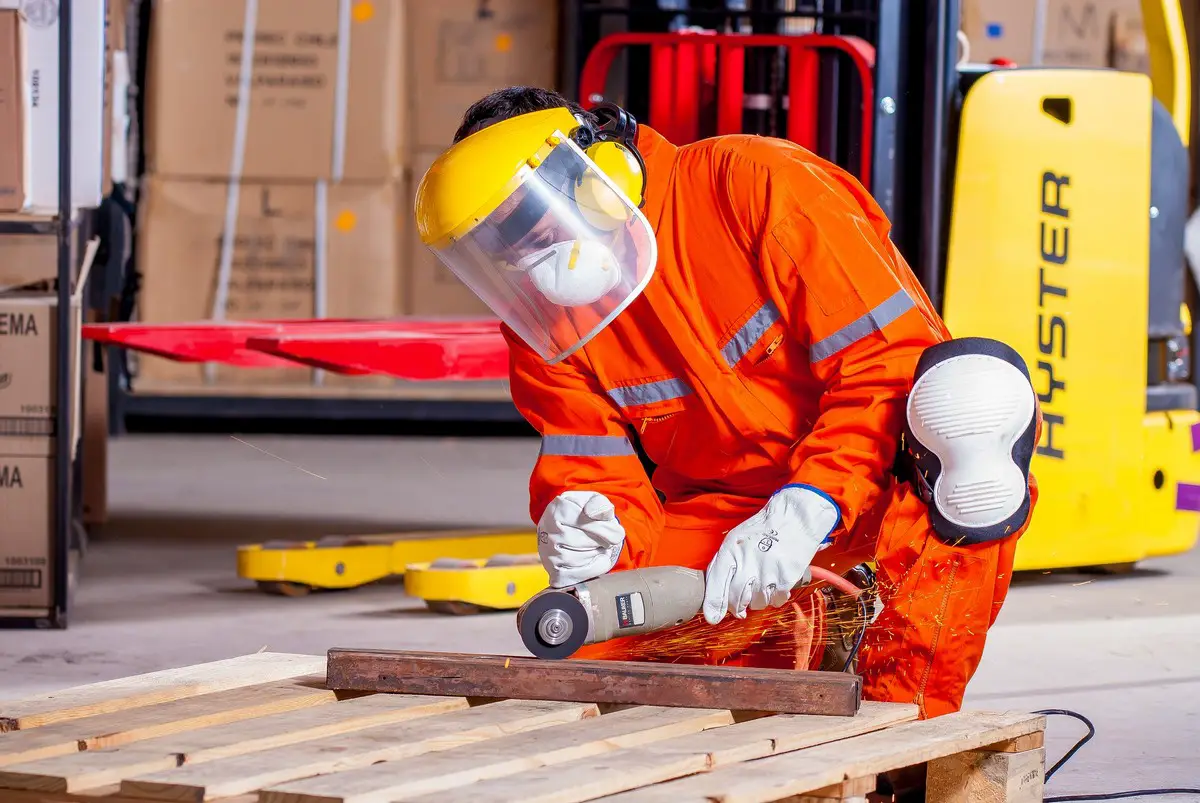Every worksite should be a safe and healthy environment. Achieving this requires a collaborative effort from every individual on the site. Construction Safety Committees play a crucial role in this endeavor, acting as guardians of worker well-being. This guide will delve into the multifaceted responsibilities of these committees, exploring their impact on hazard identification, risk mitigation, regulatory compliance, and fostering a culture of safety.
Responsibilities of Safety Committee in a Typical Construction Site
Construction sites, by their nature, present inherent risks. A dedicated safety committee serves as a proactive force, identifying potential hazards and implementing measures to prevent accidents. Their role extends beyond simply pointing out dangers; they strive to cultivate a safety-first mindset throughout the entire workforce.
Building a Safety-First Mindset
A safety committee endeavors to create a work environment where safety is not just a priority but an integral part of the work culture. This is accomplished through several key strategies:
- Spotting the Danger Zones: Committee members act as safety detectives, continuously scanning the site for potential hazards such as exposed wiring, unsecured equipment, or inadequate fall protection. Once identified, they work to eliminate or minimize these risks.
- Setting the Ground Rules: Clear and comprehensive safety guidelines are paramount to a safe job site. The committee establishes these guidelines, ensuring everyone understands the dos and don’ts.
- Safety Training—More Than Just a Box to Tick: The safety committee ensures that all workers receive appropriate and engaging safety training. This includes training on handling hazardous materials, operating machinery safely, and understanding relevant safety regulations.
- Celebrating the Safety Stars: Positive reinforcement goes a long way in promoting a safety-first culture. The committee acknowledges and rewards workers who consistently prioritize safety, reinforcing desired behaviors.
- Always Improving, Always Learning: Safety practices should evolve alongside industry standards. The safety committee constantly seeks ways to enhance safety protocols, analyzing data, and adapting strategies to ensure continuous improvement.
Giving Every Worker a Voice
A crucial aspect of a safety committee’s role is to empower every worker, regardless of their position, to voice safety concerns without fear of reprisal.
- Open Door, Open Minds: The committee fosters open communication, providing a safe space for workers to express concerns, share insights, and suggest improvements.
- Knowledge is Power: Equipping workers with safety knowledge is key to informed decision-making. The committee facilitates toolbox talks, disseminates safety alerts, and provides accessible explanations of regulations.
- Near Misses—A Learning Opportunity: Near misses are valuable learning opportunities. The committee encourages reporting of these incidents to identify patterns and prevent future occurrences.
Making the Site Safer Every Day
Safety committees take a proactive approach, actively seeking solutions and continuously striving for improvement.
- Hazard Hunters: The committee conducts regular Job Hazard Analyses (JHAs) to identify potential hazards before they escalate into accidents.
- Fixing What’s Broken: Identified hazards are addressed promptly. The committee assigns responsibilities for corrective actions, ensuring they are implemented effectively.
- Keeping Things Fresh: Safety procedures require regular review and updates to align with the latest industry standards. The committee ensures that these procedures remain relevant and effective.
- Reporting to the Top: Maintaining transparent communication with management is vital. The committee provides regular reports on safety performance, highlighting areas for improvement.
Staying Legal and Saving Lives
Compliance with safety regulations is not merely a formality but a critical aspect of protecting worker well-being.
- The Rules of the Game: The committee ensures the worksite adheres to all applicable federal and state safety regulations, including OSHA standards and local building codes.
- Accident Prevention Squad: Minimizing accidents and occupational illnesses is a primary objective. The committee achieves this through targeted programs, comprehensive training, and an unwavering focus on prevention.
- Gearing Up for Safety: The committee ensures workers have access to appropriate personal protective equipment (PPE) and understand its proper use.
- Staying Ahead of the Curve: The committee stays informed about industry best practices, continuously seeking ways to enhance safety measures.
The dedication and efforts of a safety committee are essential for a secure and productive work environment. Their commitment to proactive hazard identification, comprehensive training, and fostering a culture of open communication contributes significantly to ensuring that every worker returns home safely at the end of the day.
Check out our construction company description to learn more about our company’s mission, vision, and values. If you’re looking for a detailed overview of our services and expertise, our building construction business profile is a great resource. And if you’re interested in partnering with us on your next project, take a look at our contractor profile to get an idea of our qualifications and experience.
What are the Legal Requirements for Construction Site Safety Committees?
While the importance of a construction site safety committee is clear, it’s crucial to understand the legal framework surrounding their formation and operation. Both federal and state regulations dictate specific requirements that companies must adhere to.
Making Sense of the Legal Landscape
OSHA’s Ground Rules:
The Occupational Safety and Health Administration (OSHA) sets forth regulations regarding safety committees in certain construction sectors. These include general construction projects (OSHA standard 1926.20(b)(1)), shipyards (1915.6(e)), and marine terminals (1917.24(a)(1)). The specific requirements can vary based on the type of construction and crew size.
Don’t Forget the States:
In addition to federal OSHA regulations, many states have implemented their own requirements regarding safety committees on construction sites. These requirements may include additional duties for the committee or specific guidelines on committee composition. It is essential for construction companies to be well-versed in both federal and state regulations.
Building a Safety Committee That Works
Creating a safety committee that’s both effective and legally compliant requires careful planning:
- Gather a Diverse Crew: Include representatives from various departments and levels within the company to ensure a comprehensive understanding of safety concerns.
- Crystal Clear Responsibilities: Define the roles and responsibilities of each committee member, providing clarity and empowering them to take necessary action.
- Training is Key: Committee members should receive thorough training on relevant safety regulations, hazard identification, accident investigation procedures, and other essential topics.
In a Nutshell
Safety committees are essential for fostering a safe and healthy work environment, and their establishment is often mandated by law. By understanding and adhering to both federal and state regulations, and by structuring a well-defined and empowered committee, construction companies can create a workplace where safety is paramount. When in doubt, seeking guidance from legal professionals or relevant regulatory agencies can ensure compliance and contribute to a safer work environment for all.
For More Information:
How to Establish an Effective Construction Site Safety Committee?
Establishing an effective construction site safety committee requires careful planning, clear communication, and a commitment to fostering a safety-first culture. By following these steps, companies can create a committee that actively promotes worker well-being and contributes to a safer work environment.
1. Set a Clear Goal (and Shout it from the Rooftops!)
Clearly define the committee’s purpose and objectives. Are you aiming to reduce accident rates, improve safety training, or boost morale by demonstrating a commitment to safety? Aligning the committee’s goals with the company’s overall safety objectives ensures a focused approach.
2. Assemble Your A-Team (Diversity is Key!)
Select members from different departments, experience levels, and trade backgrounds. This diversity brings a broader range of perspectives and insights into potential hazards and solutions.
3. Write the Rulebook (and Make It Practical!)
Develop clear and concise safety policies and procedures that are easily understood and implemented. Cover topics such as hazard reporting, accident investigation, and emergency response protocols.
4. Get Everyone Onboard (Empower Your Crew!)
Communicate the committee’s initiatives and progress to all workers, encouraging their active participation in safety efforts. Empower employees to report hazards and suggestions without fear of reprisal.
Remember: The success of a safety committee relies on active participation and a collaborative effort. For additional guidance, consult OSHA’s resources on safety committees, which provide valuable information and best practices.
OSHA Safety and Health Topics: Safety Committees
What are the Roles and Responsibilities within a Construction Site Safety Committee?
A construction site safety committee functions as a proactive force, dedicated to identifying and mitigating potential hazards. Their roles and responsibilities encompass a wide range of tasks, all geared toward fostering a safe work environment.
Here’s a breakdown of their key functions:
1. Regular Safety Inspections: The committee conducts routine inspections of the worksite, meticulously checking for any unsafe conditions, such as tripping hazards, faulty equipment, or inadequate fall protection.
2. Creating and Enforcing Safety Rules: They establish and enforce clear safety guidelines that all workers must follow. This includes developing policies, providing training, and ensuring compliance.
3. Investigating Close Calls and Accidents: When incidents occur, the committee acts as investigators, determining root causes and identifying areas for improvement to prevent similar occurrences.
4. Suggesting Improvements: They go beyond identifying problems by proposing practical solutions, such as recommending new safety equipment, implementing changes to work procedures, or suggesting additional training.
5. Teaming Up with Other Safety Pros: Collaboration is key. They work closely with the project manager, safety officers, and contractors to ensure a coordinated approach to safety.
The Bottom Line:
Safety committees are indispensable for maintaining a safe and productive construction site. By embracing their responsibilities and working collaboratively, they play a critical role in ensuring that every worker can return home safely.
- Glass Tile Bathroom: Create a Beautiful, Easy-Clean Space - December 5, 2025
- Glass Tile: Brighten Your Home With Stylish Glass Backsplashes - December 3, 2025
- Glass Backsplash: Ideas For a Stylish Kitchen Update - December 2, 2025










